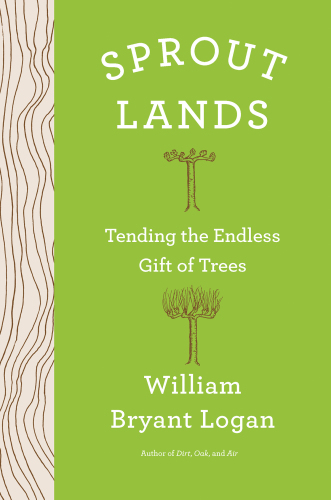
Sprout Lands
Tending the Endless Gift of Trees
کتاب های مرتبط
- اطلاعات
- نقد و بررسی
- دیدگاه کاربران
نقد و بررسی

Starred review from January 1, 2019
An arborist celebrates the intrinsic creativity of trees.When Logan (Air: The Restless Shaper of the World, 2012, etc.) was hired to train and care for 92 trees in front of New York's Metropolitan Museum of Art, he became obsessed with sprouting--the ability of any leafy tree or shrub to grow new branches after its trunk is cut or burned--and with the ancient practices of coppice and pollard that nurtured this regenerative power. Resprouting allows a tree to stay alive after damage or disease. "Eighty percent of the trees in a leafy forest are not virgins from seed," the author reveals, "but experienced sprouts," some extending the life of a tree for thousands of years. Logan's lively obsession inspired him to travel the world--to England, Spain, Sierra Leone, Norway, Japan, and the redwood forests of California--to investigate the rich and intimate connection between trees and humans. His astute attentiveness and curiosity have resulted in a radiant, insightful amalgam of botany, history, travel memoir, anthropology, archaeology, philosophical meditation, and, not least, environmental ecology. In coppicing, he explains, trees are cut or burned down to the ground; in pollarding, trunks are cut higher. Both practices yield astounding new growth: "the wood jumps back into the sky," attaining heights of 6 feet or more in the first year. Beginning in the Mesolithic age, humans depended on the two practices for energy, warmth, and structure. Trees could provide straight, strong vertical branches for building; curved branches for barrel hoops; small branches to make into charcoal. In the Basque Country, an elaborate form of pollarding gave boat builders thick, curved timbers for a ship's hull. With a "very active relationship to trees," humans listened and observed as trees taught them how to cut, when to stop, and how to wait, lessons that are still salient. "If we are to get out of the dead end that our mastery of nature has backed us into," Logan writes, we would do well to heed the intelligence of trees.A graceful homage abounding in fascinating discoveries.
COPYRIGHT(2019) Kirkus Reviews, ALL RIGHTS RESERVED.

February 1, 2019
Tree pruning is perhaps an unlikely topic for engaging nonfiction, but arborist and acclaimed nature writer Logan's (Dirt; Oak; Air) exploration of traditional woodland cutting is just that. He describes two related pruning methods that have been used for millennia to harvest wood without killing the tree, coppice and pollard, the first occurring at ground level and the second done at trunk height of eight to ten feet. After he's offered a position pollarding plane trees outside New York's Museum of Modern Art, the author travels the world (England, Spain, Norway, Japan) to learn everything he can, to satisfy his "obsession with sprouting and with the antiquity and scope of people's life with trees." Bryant's curiosity about the old ways is evident on nearly every page as he shows how, throughout history and up until the last couple centuries, humans had an active relationship with trees through their various pruning practices; a "reciprocal" relationship, one that was beneficial for both people and woodlands. VERDICT Bryant knows trees, and much more. Tree lovers--even those who consider pollarded trees ghastly and strange--will be drawn in by Bryant's vast cultural and scientific references, and charmed by passages that read like prose poems.--Robert Eagan, Windsor P.L., Ont.
Copyright 2019 Library Journal, LLC Used with permission.

























دیدگاه کاربران